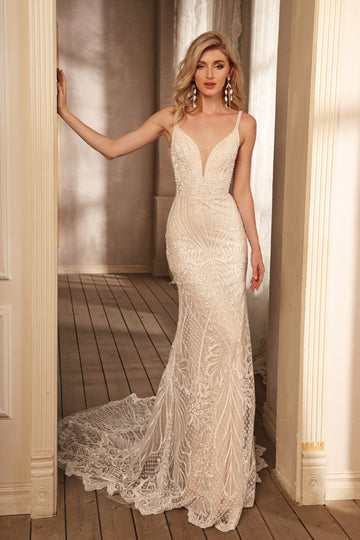Draped Silhouettes in Nature: A Study of Form and Elegance
Draped Silhouettes in Nature: A Study of Form and Elegance
Understanding Draped Silhouettes
When we think about fashion and nature, the concept of 'Draped Silhouettes in Nature' emerges as a captivating topic. Draped silhouettes offer a unique combination of elegance and dynamic movement, mimicking the natural world's organic forms. This article aims to explore the relationship between draped silhouettes in fashion and their parallels in nature, emphasizing their aesthetic appeal and significance.
The Beauty of Draped Silhouettes
Draped silhouettes are created by allowing fabric to fall and flow freely, often resembling natural forms. This technique provides a sense of fluidity, creating visual harmony. Designers like Alexander McQueen and Issey Miyake have mastered this art, drawing inspiration from natural elements. Their styles highlight how draped silhouettes can evoke a sense of grace and simplicity akin to landscapes, flowers, and even human gestures.
The Connection Between Fashion and Nature
The natural world has always influenced fashion—shapes and textures found in nature often translate into garment designs. Draped silhouettes can reflect various elements from nature, such as:
- Waterfalls cascading down rocks
- Waves gently lapping against a shore
- Flowing fields of grass swaying in the wind
As seen in the works of many contemporary designers, the incorporation of natural inspirations leads to designs that convey a story of elegance and movement, allowing wearers to express their connection to the environment.
The Aesthetic Appeal of Draped Silhouettes
A well-designed draped silhouette can enhance the body's natural shape, adding a layering effect that exudes both confidence and sophistication. Here we present a simple table summarizing the aesthetic qualities of draped silhouettes that make them appealing:
| Quality | Description |
| Fluidity | Represents freedom of movement, akin to wind or water. |
| Biomorphism | Mimics organic shapes found in nature, promoting a harmonious look. |
| Layering | Adds depth to an outfit, creating enhanced visual complexity. |
| Versatility | Can be worn on various occasions, from casual outings to formal events. |
Creating Your Own Draped Silhouettes
If you're inspired by the concept of 'Draped Silhouettes in Nature' and wish to incorporate this style into your wardrobe, consider the following tips:
- Choose the Right Fabrics: Light, flowing materials, such as chiffon, silk, or jersey, help create that ethereal feel. These fabrics mimic the softness of nature, allowing movement and draping.
- Experiment with Color: Earthy tones and natural hues can enhance the connection to nature. Think of greens, blues, and neutrals to represent landscapes and bodies of water.
- Accessorize Wisely: Minimal accessories complement draped silhouettes. Consider using subtle jewelry that won't detract from the outfit's elegance.
- Consult a Tailor: For a flawless fit, seek a professional's assistance. A tailored piece can elevate the look of draped garments, ensuring they flow elegantly.

Nature's Influence in Fashion Design
Many designers claim that nature serves as their primary muse. For example, the tranquility of a forest or the mesmerizing patterns of a sunset can provide ideas for new collections. The draped silhouette technique reflects these inspirations perfectly, creating outfits that tell a story of unity with the natural world.
Fashion Shows: Draped Silhouettes in Action
Fashion shows often showcase creativity and experimentation in design. Notable fashion weeks in cities like New York and Paris frequently feature collections that highlight draped silhouettes. These runway presentations demonstrate how designers can merge artistic vision with functional wear, all while drawing their inspirations from nature.
FAQs Related to Draped Silhouettes in Nature
Considering the rising interest in draped silhouettes, here are some frequently asked questions:
1. What is the significance of draping in fashion design?Draping in fashion design plays a significant role in developing the aesthetic and structure of garments. It allows designers to experiment with fabric's flow, creating unique shapes and styles that enhance the wearer's figure.
2. How do I incorporate draped silhouettes into my daily wardrobe?Incorporate draped silhouettes by selecting flowy tops, skirts, or dresses. Look for garments where the fabric falls naturally, creating a relaxed yet elegant silhouette suitable for casual and formal settings.
3. Can draped silhouettes be suitable for all body types?Yes, draped silhouettes can flatter a variety of body types. The movement and flow of the fabric can conceal certain areas while accentuating others, promoting a balanced appearance.
Conclusion: Embrace Nature's Draped Elegance
Draped silhouettes in nature represent the beauty of movement and form, reflecting the organic shapes found in the environment around us. As fashion continues to evolve, the connection between draping techniques and natural inspirations will remain significant.
By embracing draped silhouettes, fashion enthusiasts can capture the essence of elegance, fluidity, and sophistication, creating looks that are not only aesthetically pleasing but also celebrate the harmony between humanity and nature. Remember, the key to achieving this style lies in understanding how to select the right fabrics, colors, and silhouettes that resonate with the natural world's beauty.
